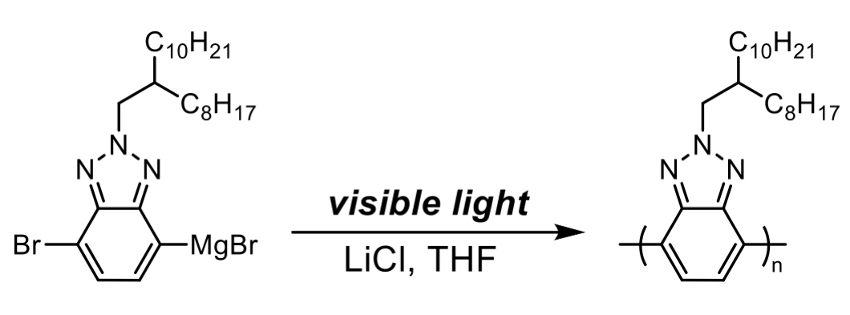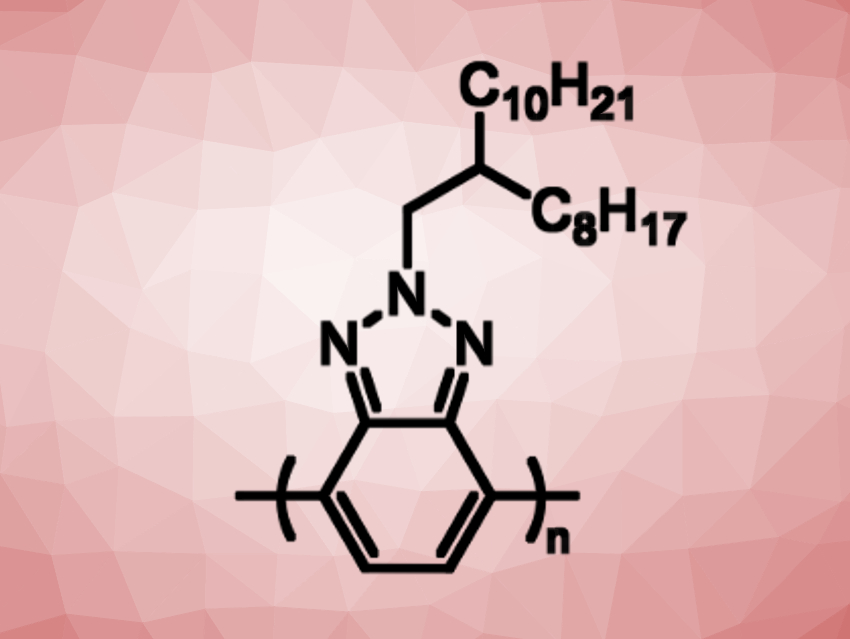π-Conjugated polymers (CPs) are alternatives to inorganic semiconductors for flexible and lightweight electronics. These polymers are usually synthesized using transition-metal catalysts (like palladium and nickel), which add to the cost of the polymer, are challenging to remove, and can degrade electronic devices at even parts-per-million levels.
Julia A. Kalow, Northwestern University, Evanston, IL, USA, and colleagues have developed a transition-metal-free polymerization driven by visible light. This method works well with electron-deficient Grignard monomers, which polymerize under irradiation to produce n-type CPs (pictured below). Grignard reagents are powerful synthetic tools, but their photochemistry is not well-explored. The reaction uses lithium chloride as an additive and tetrahydrofuran (THF) as the solvent. Varying the wavelength of light for polymerization could be used to tune the molecular weight and dispersity of the polymers.
The team used this reactivity to prepare an all-conjugated block copolymer, by polymerizing the first block with red light and then extending with a second type of monomer, which cannot react on its own using red light. Such all-conjugated block copolymers, particularly with n-type polymers, are difficult to access by transition-metal-catalyzed reactions.

- Photocontrolled synthesis of n-type conjugated polymers,
Eliot F. Woods, Alexandra J. Berl, Julia Ann Kalow,
Angew. Chem. Int. Ed. 2020.
https://doi.org/10.1002/anie.201915819




